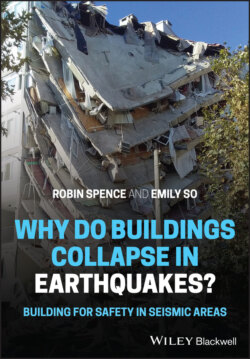Читать книгу Why do buildings collapse in earthquakes? Building for safety in seismic areas - Robin Spence - Страница 28
2.4 Earthquake Losses in Rich and Poor Countries
ОглавлениеTable 2.1 lists 23 significant earthquakes which have occurred since the year 2000, causing a total of 699 000 deaths and US$488bn of damage costs. Using data on national income given by the World Bank, we can allocate these totals by the four country income categories defined by the World Bank, as shown in Table 2.2.
Table 2.2 Distribution by World Bank Income Groups of deaths and damage costs in the 23 significant earthquakes listed in Table 2.1.
Source: World Bank (2019).
| World Bank Country Group | GNI/capita (2018 US$) | Deaths (% of total) | Damage costs (% of total) |
|---|---|---|---|
| Low‐income | <996 | 33 | 3 |
| Lower‐middle income | 996–3 895 | 13 | 2 |
| Upper‐middle income | 3 896–12 055 | 51 | 25 |
| High‐income | >12 055 | 3 | 71 |
The income group of each country is shown in Table 2.1 (World Bank 2019).
Of the deaths, 51% have occurred in upper‐middle income countries, 13% in lower‐middle income countries, 33% in low‐income countries and only 3% in high‐income countries (principally the 2011 tsunami deaths in Japan). For damage costs, the order is reversed: 71% of the damage costs were borne by the high‐income countries (mostly by Japan), a further 25% by the upper‐middle income countries and only 2 and 3%, respectively, in the lower‐middle and low income countries. So clearly, a country's vulnerability depends to an extent on its relative wealth. But most of the deaths from these events were in the upper‐middle income countries, not the poorest. And damage costs were very significantly concentrated in the high‐income countries.
Another way to look at this disparity is to plot damage costs against casualty figures country by country, using all of the earthquakes which are reported for each country in the EM‐DAT database for the period 2000–2019 (CRED 2020). This plot is shown in Figure 2.19.
Dotted lines on the chart show the loss per fatality from the earthquakes during this 20‐year period. The position of different countries on this chart shows both their relative earthquake‐proneness and their relative wealth. Countries with the highest life loss are on the right of the chart, but those with the greatest damage cost at the top. The most vulnerable countries are those towards the bottom right (India, Pakistan, Nepal, Iran, Indonesia and Haiti). The least vulnerable to loss of life are at the top left (Chile, Italy and Mexico). Countries such as the United States and Greece in which fewer than 200 lives were lost in that period of time as a result of earthquake ground shaking do not appear on the chart at all.
